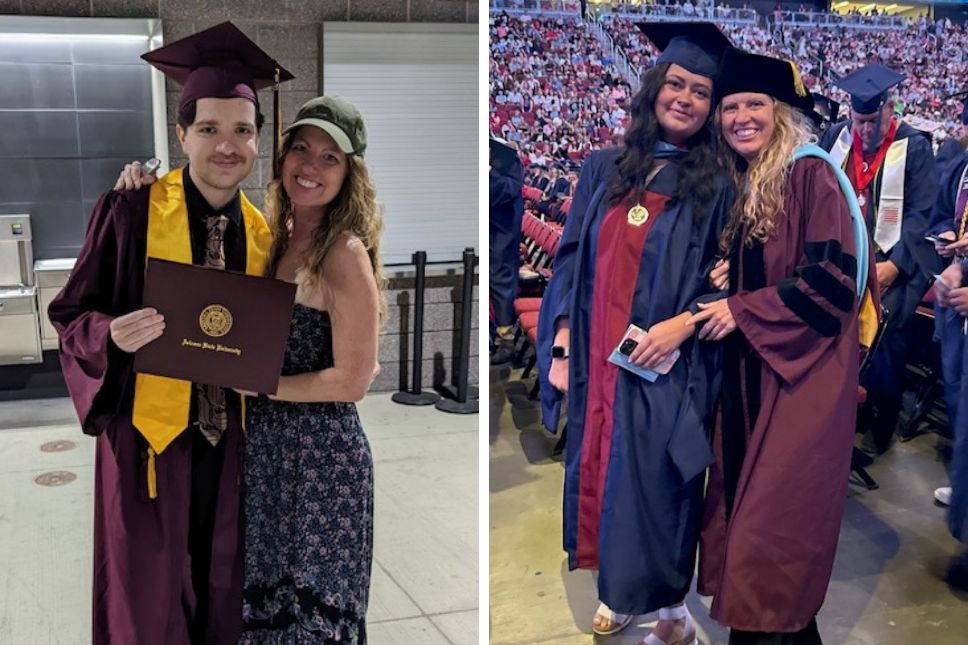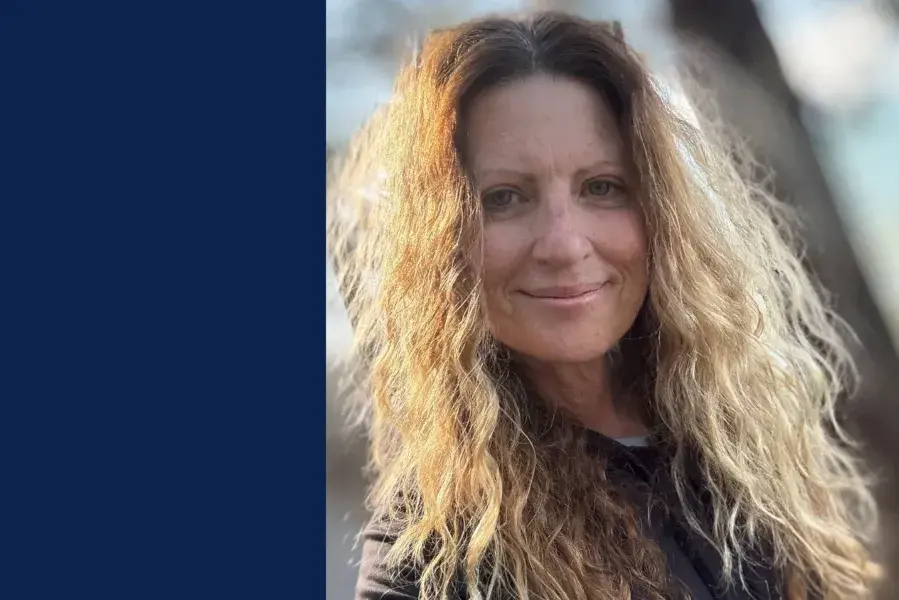Dr. Michelle Otstot says the path to success can be described in one key mantra: “No mud, no lotus.”
That’s because the path toward worthwhile rewards isn’t always clean and simple, she notes.
“The lotus flower is very beautiful, but it grows within a very muddy environment,” explains Dr. Otstot, Assistant Professor for the BA in the Early Childhood Education and BA Early Childhood Education Administration programs at the University of Arizona Global Campus (UAGC).
“Without the mud, we cannot have this beautiful bloom,” she adds.
This isn’t her only mantra, however. Another primary one Dr. Otstot often repeats pertains to her students.
“When you give love, you receive love,” she says, a saying that aligns with the mission of UAGC faculty to create an environment that fosters a culture of care. This principle, she says, stems from her commitment to her students and their learning journeys.
“The more that I give to my students — the support, the flexibility, the various instructional strategies — the more they're going to give back to the course and their own learning,” she adds.
This sentiment holds true in her teachings. With five higher education degrees under her belt and decades of experience, Dr. Otstot’s focus remains on providing high-quality, holistic learning experiences for her students, while remaining a valuable resource, both intellectually and professionally, to her peers.
Education Through the Ages
Like many educators, Dr. Otstot knew she was destined to teach from a young age. Her mother was a first-grade teacher, and she recalls going with her to help set up her classroom and falling in love with the environment.
“I just loved teaching,” Dr. Otstot recalls. “She just had the most wonderful job, and she could care for the students, and I wanted to be that.”
Inspired by this experience, she took a part-time job at a Montessori school in her secondary education years, working there and with the Special Olympics during her half-days in high school.
Dr. Otstot continued this trend by building on that familial teaching foundation. In her career, she spent 26 years teaching pre-kindergarten, and she also held leadership roles, from human resources positions to a principal role in a public school.
Her higher education holds the same variety and prestige. Dr. Otstot holds two special education degrees, along with a master's degree in Montessori Early Childhood Education and a Doctorate in Educational Leadership and Innovation.
“I'm always thinking about the variety of students that come into our classroom and how they may want to learn versus doing it one way, and I'm constantly thinking of new ways to innovate and provide those opportunities, those student experiences from my Montessori perspective,” she says.
Garnering these many distinctions stems from her passion for learning, a passion she has passed down to her family. Her daughter, Chloe Otstot, is also a UAGC alum and earned a master’s degree in special education in July 2025.

Dr. Otstot is the proud mother of two college graduates, including her son, Kyle, and her daughter, Chloe, who is a graduate of UAGC.
The Marvels of Montessori
Through her many degree ventures, the teaching ideology that anchors Dr. Otstot’s practice remains rooted in the Montessori method. Taking cues from her very first teaching role, she emphasizes that Montessori focuses on an intuitive, yet tailored approach to subject learning.
“It's focused on a prepared environment in which we create learning experiences that are concrete to abstract shelving,” she explains. “The children have freedom within limits. They can choose the work that engages them at their skill level and where they need to be.”
Her involvement spreads across Montessori teaching roles at all age levels, even writing curriculum for a Montessori associate degree program. With a system that allows for multiple age groups to learn alongside each other in the classroom, and with older students mentoring the younger ones, Dr. Otstot notes this flow is effective, relaxing, and engaging for teachers and students alike.
“It's very beautiful. It's very peaceful,” she says. “We teach the children how to behave in an environment that's civil, that is respectful and sharing and courteous.”
The UAGC Mission
This formula for early childhood education lives as an overarching theme in her current role. Dr. Otstot’s higher education career also spans over a decade with similar prestige.
She has taught part-time higher education courses during her PreK-12 years as a means of supplemental income, so she was already familiar with the framework. Dr. Otstot found UAGC through Dr. Kelly Stewart Olson, who she worked with during her doctoral program at Arizona State University. When Dr. Olson reached out for part-time faculty members, she jumped at the chance, earning her own full-time faculty position that very same year. She declares the kinship and support of UAGC faculty to be one the University’s best qualities.
“I just can't express enough how kind our team is,” she says. “We work together so well that any one of us can text or call one another for advice or clarification on an issue they may be more knowledgeable about, and then I can do the same.”
On the Tech Forefront
Outside of her core roles, Dr. Otstot remains involved with children in several capacities. She attends conferences with the National Association for the Education of Young Children as a presenter at the organization’s annual conference. She also works as a peer reviewer for the Higher Education Accreditation, where she obtains the optimal strategies for reviewing coursework and teaching methods at institutions around the country.
“I'm really focusing on refining my skill set of best practices in higher education in the field of early childhood,” she says.
As an additional area of interest, Dr. Otstot dives into the technology and innovation side of learning, through her own personal interest and the drive to engage in current topics with her students. She says that the push for innovation keeps everything fresh.
“For my dissertation back in the day, I was implementing some pretty innovative, bring-your-own-technology practices in elementary education, where we transformed the whole instructional experience for students,” she says. “AI is on my radar, the new media elements that we can put into our courses, that connects our students in a virtual setting, that gives them some real-world application.”
